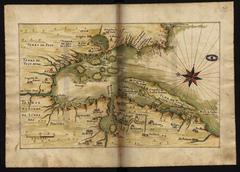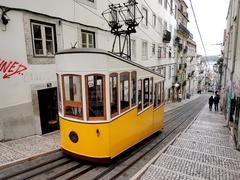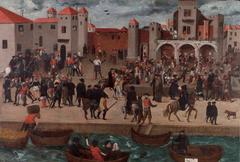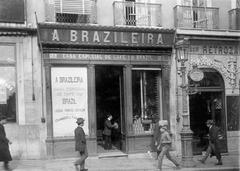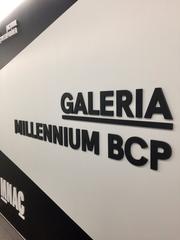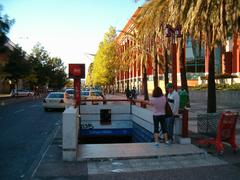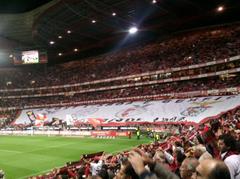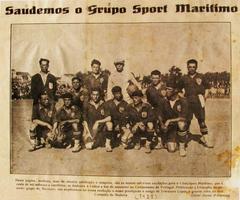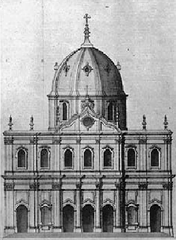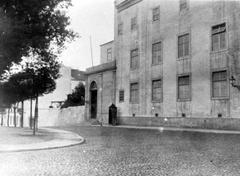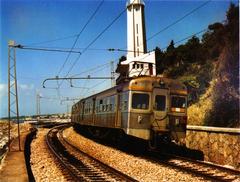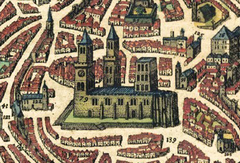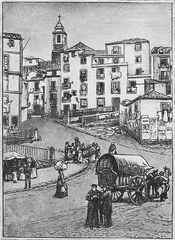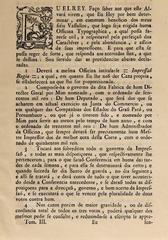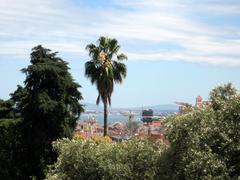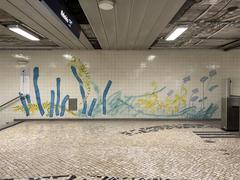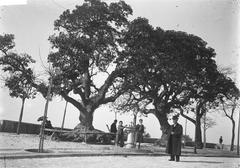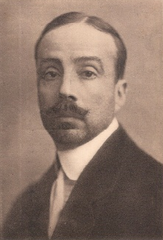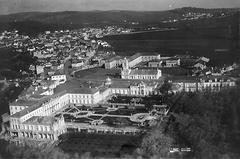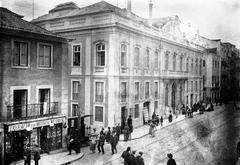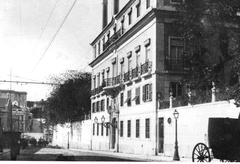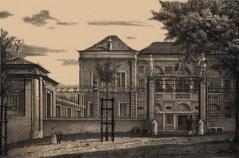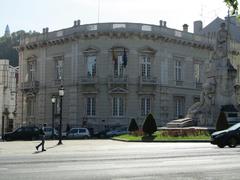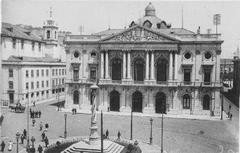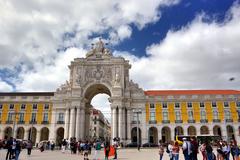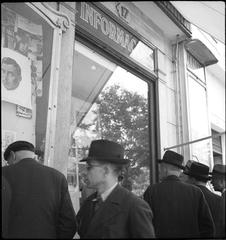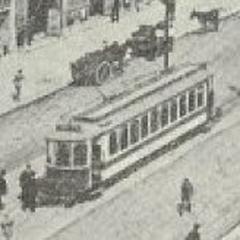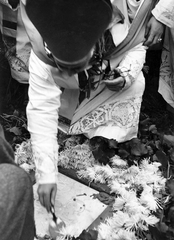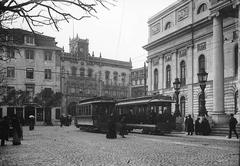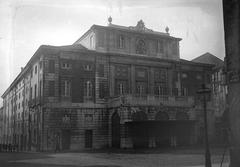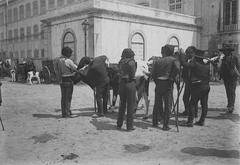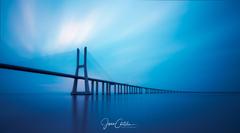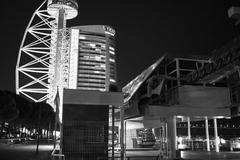Comprehensive Guide to Visiting Caparica E Trafaria, Lisbon, Portugal
Date: 17/08/2024
Introduction
Welcome to this comprehensive guide on visiting Caparica e Trafaria, two charming locales along the scenic coast of Lisbon, Portugal. Nestled on the south bank of the Tagus River, these towns are rich in history, culture, and natural beauty, making them perfect destinations for various types of travelers. From the Roman conquest of the Iberian Peninsula to its modern-day appeal as a coastal retreat, Caparica e Trafaria have evolved through centuries of significant historical events and cultural transformations (Wikipedia). These towns offer a unique blend of ancient ruins, medieval parishes, and modern urbanization, attracting history buffs, beach lovers, and culinary enthusiasts alike.
Caparica’s origins trace back to Roman times, and its name is believed to derive from the Latin word “capparis,” hinting at the area’s agricultural potential even in ancient times. The region’s medieval period saw the establishment of various parishes, further consolidating its significance under Portuguese rule. The 19th century added another layer of richness with royal visits and industrialization, while the 20th century brought rapid urbanization and administrative changes, merging the parishes into the unified entity of Caparica e Trafaria (Wikipedia).
Today, Caparica e Trafaria are celebrated for their stunning beaches, cultural significance, and vibrant local life. Costa da Caparica’s 30-kilometer stretch of golden sands is a paradise for beach lovers and surfers, while Trafaria offers a quieter, more traditional fishing town experience. The culinary scene, particularly the seafood, is a significant draw for food lovers, reflecting the towns’ deep connection to the sea (Taste of Lisboa). Whether you’re planning a day trip or an extended stay, this guide will provide you with all the essential information, from historical insights to practical travel tips, to make your visit memorable.
Table of Contents
- Discover the Rich History of Caparica e Trafaria: Visiting Hours, Tickets, and More
- Early History and Roman Influence
- Medieval Period and Formation of Parishes
- The Legend of Costa da Caparica
- 19th Century: Royal Visits and Industrialization
- 20th Century: Urbanization and Administrative Changes
- Fort of Trafaria: A Historical Landmark
- Modern Era: Tourism and Cultural Significance
- Visitor Information
- FAQ
- Discover Caparica E Trafaria: History, Culture, and Visitor Information
- Ultimate Guide to Visiting Caparica and Trafaria: Travel Tips, Best Beaches, and Local Culture
Discover the Rich History of Caparica e Trafaria: Visiting Hours, Tickets, and More
Caparica e Trafaria, nestled along the stunning coast of Portugal, is a treasure trove of historical and cultural significance. From its ancient Roman roots to its modern-day appeal as a coastal retreat, this area offers a unique blend of history, culture, and natural beauty. Whether you’re a history buff, a beach lover, or a culinary enthusiast, Caparica e Trafaria has something to offer. In this article, we’ll delve into its rich past, provide practical visitor information, and highlight nearby attractions to help you plan your visit.
Early History and Roman Influence
The origins of Caparica can be traced back to the Roman conquest of the Iberian Peninsula. The name “Caparica” is believed to derive from the Latin word “capparis,” meaning caper, a plant that was likely abundant in the area during Roman times. This suggests that the region was known for its agricultural potential even in ancient times. The Roman influence is a significant part of the area’s early history, laying the groundwork for its development over the centuries (Wikipedia).
Medieval Period and Formation of Parishes
Caparica became an official parish in 1472, marking its importance in the administrative structure of the region. This period saw the establishment of various localities within the parish, contributing to its growth and development. The medieval era was a time of consolidation for Caparica, as it transitioned from a Roman-influenced settlement to a more structured community under Portuguese rule (Wikipedia).
The Legend of Costa da Caparica
A fascinating legend surrounds the toponymy of Costa da Caparica, involving an old woman who lived between Almada and the ocean. She wore a multi-colored patchwork cape and was believed to be a witch and miser. Upon her death, gold coins were found hidden in her cape, leading to the construction of a church by the King, as per her last wishes. This legend adds a layer of mystique to the area’s history and highlights the cultural narratives that have shaped its identity (Wikipedia).
19th Century: Royal Visits and Industrialization
The 19th century was a transformative period for Caparica and Trafaria. Costa da Caparica gained prominence due to its association with Portuguese royalty. King John VI of Portugal reportedly enjoyed a seafood stew here in 1824, leading to the royal coat-of-arms being raised on a local fountain. The area also served as a waypoint for Queen Maria II and King Pedro V during their travels. These royal connections elevated the status of Costa da Caparica and contributed to its historical significance (Wikipedia).
Trafaria, on the other hand, evolved from an industrial stronghold to a peaceful haven. It was historically significant as a quarantine station during the Age of Discoveries, holding people and goods arriving in Lisbon to safeguard against disease spread. This role underscores Trafaria’s importance in the broader context of Portuguese maritime history (Taste of Lisboa).
20th Century: Urbanization and Administrative Changes
The 20th century brought significant changes to Caparica and Trafaria. Costa da Caparica was classified as a town in 1985 and elevated to city status in 2004. This period saw rapid urbanization and the development of infrastructure to support a growing population and increasing tourism. The administrative reform of 2013 merged the parishes of Caparica and Trafaria into the new parish of Caparica e Trafaria, streamlining governance and fostering a unified identity for the region (Wikipedia).
Fort of Trafaria: A Historical Landmark
The Fort of Trafaria, also known as the Fort of Nossa Senhora da Saúde da Trafaria, is a significant historical landmark. Dating back to 1683, it has never been used in battle but has played various roles over the centuries. In 1901, it was the site of the first wireless connection in Portugal, receiving a message from a transmitting station across the Tagus River. The fort was later used as a military prison and underwent several restorations. In 2020, it was announced that the fort would be rehabilitated to become the site of the Institute of Art and Technology of the NOVA University Lisbon, ensuring its preservation and continued relevance (Wikipedia).
Modern Era: Tourism and Cultural Significance
Today, Caparica e Trafaria is a vibrant area known for its stunning beaches, rich history, and cultural significance. Costa da Caparica’s 30-kilometer stretch of golden sandy beaches makes it a paradise for beach lovers, surfers, and outdoor enthusiasts. The town offers a unique blend of natural beauty and urban convenience, attracting both locals and international visitors. The proximity to Lisbon, just 14 kilometers away, enhances its appeal as a coastal retreat with easy access to the capital’s amenities (Portugalist).
Trafaria, with its traditional fishing practices and quiet surroundings, provides a stark contrast to the bustling urban life of Lisbon. The town’s culinary scene, particularly its seafood, reflects its deep connection to the sea. Local restaurants offer dishes featuring the freshest catch, prepared in ways that have been perfected over generations. This culinary heritage is a significant draw for food lovers visiting the area (Taste of Lisboa).
Visitor Information
Visiting Hours and Tickets
- Caparica e Trafaria: Most attractions and beaches are open year-round. Specific visiting hours for historical sites like the Fort of Trafaria can vary, so it’s best to check the official websites or local tourist information centers.
- Tickets: Entry to beaches is generally free. Historical sites may have an entrance fee, ranging from €2 to €5. Special events or tours might require additional tickets.
Travel Tips
- Getting There: Caparica e Trafaria are easily accessible from Lisbon. Buses and ferries are frequent, and the journey takes about 30 minutes.
- Best Times to Visit: Spring and summer are ideal for beach activities, while autumn offers a quieter experience with milder weather.
- Nearby Attractions: Don’t miss the Cristo Rei statue in Almada and the historic Belem district in Lisbon.
Accessibility
- Beaches: Many of Costa da Caparica’s beaches are equipped with facilities for visitors with reduced mobility.
- Historical Sites: Some sites may have limited accessibility; it’s advisable to check in advance.
FAQ
What are the visiting hours for Caparica e Trafaria?
- Most beaches and outdoor areas are accessible at all times. Specific visiting hours for historical sites like the Fort of Trafaria should be checked on official websites or local information points.
How much do tickets cost?
- Beach access is usually free. Entrance fees for historical sites range from €2 to €5. Special events or guided tours may have additional costs.
What are the best times to visit?
- Spring and summer are best for enjoying the beaches and outdoor activities. Autumn provides a quieter experience with pleasant weather.
Discover Caparica E Trafaria: History, Culture, and Visitor Information
Introduction
Welcome to Caparica and Trafaria, two charming locales on the south bank of the Tagus River in Lisbon, Portugal. Known for their rich history, vibrant culture, and stunning natural landscapes, these areas are perfect for visitors seeking a unique experience. In this guide, we’ll explore the historical, cultural, natural, economic, and social significance of Caparica and Trafaria, along with practical visitor information such as visiting hours, ticket prices, and travel tips.
Historical Significance
Origins and Development
Caparica and Trafaria have a rich history deeply intertwined with fishing and agriculture. The first fishermen from Ílhavo settled in Costa da Caparica in 1770, followed by a smaller group from the Algarve. These groups initially settled in different areas, leading to a rivalry that eventually melded into a unique local culture known as “Caparicano” (Planet Portugal). Over time, fishermen from Sesimbra, Setúbal, and other regions joined, contributing to the area’s cultural diversity.
Agricultural Practices
In the late 18th century, the land between the houses and the cliffs began to be used for agriculture. The soil was fertilized with algae and fish, making it highly productive for growing cereals and vines. This agricultural activity provided a subsistence solution during seasons when fishing was not possible (Planet Portugal).
Cultural Significance
Fishermen’s Quarters
The fishermen’s quarters, such as Cova do Vapor and Fonte da Telha, retain much of their original character despite modern advancements. These neighborhoods offer a glimpse into the traditional lifestyle and are a must-visit for those interested in local culture (Planet Portugal).
Cristo Rei
Located in Almada, just 9 km from Costa da Caparica, the Cristo Rei (Christ the King) monument is a significant religious and cultural landmark. Inspired by Rio de Janeiro’s Christ the Redeemer, this 110-meter-high monument was inaugurated in 1959 and offers breathtaking views of Lisbon, the 25 de Abril Bridge, and the natural parks of Sintra-Cascais and Arrábida (Goto Portugal).
Natural Significance
Costa da Caparica Fossil Cliff Protected Landscape
One of the most remarkable natural features of the area is the Costa da Caparica Fossil Cliff Protected Landscape. Located 10 km from the city center, this area is a natural treasure that offers stunning views and unique geological formations. The cliffs, ranging from 70 to 100 meters in height, are a testament to the region’s ancient geological history (Goto Portugal).
Beaches
The beaches of Costa da Caparica are among the most beautiful in Portugal, stretching for 15 km along the coastline. These beaches are not only popular for their fine sand and clear waters but also for the small railway line operated by Transpraia during the high season, which takes visitors from Nova Praia to Fonte da Telha (Goto Portugal).
Economic Significance
Tourism
Tourism plays a crucial role in the local economy. The area’s proximity to Lisbon makes it a popular destination for both locals and tourists. The beaches, natural landscapes, and cultural landmarks attract thousands of visitors each year, contributing significantly to the local economy. The Festival Sol da Caparica, held annually in August, is one of the largest Lusophone music festivals and draws huge crowds, further boosting the local economy (Visit Lisboa).
Fishing and Agriculture
Despite the decline in fishing’s economic importance over the years, it remains a vital part of the local culture and economy. Agriculture, particularly the cultivation of cereals and vines, continues to be an essential activity, supported by the fertile soil enriched with algae and fish (Planet Portugal).
Social Significance
Community and Lifestyle
The community in Caparica and Trafaria is known for its authenticity and warmth. The local lifestyle is deeply rooted in traditional practices, from fishing to agriculture, and this sense of community is evident in the fishermen’s quarters and local markets. The promenade along the seafront is a popular spot for locals and visitors alike, offering a place to walk, run, or relax while enjoying the stunning views of the Atlantic Ocean (Goto Portugal).
Events and Festivals
The region hosts various cultural events throughout the year, adding to its social vibrancy. The Festival Sol da Caparica is a highlight, featuring performances by renowned Lusophone artists and attracting music lovers from all over the world. This festival not only celebrates music but also fosters a sense of community and cultural exchange (Visit Lisboa).
Environmental Significance
Conservation Efforts
The Costa da Caparica Fossil Cliff Protected Landscape is a significant conservation area, aimed at preserving the unique geological formations and biodiversity of the region. Efforts are made to protect the cliffs and surrounding areas from urban development and environmental degradation, ensuring that this natural treasure remains intact for future generations (Goto Portugal).
Sustainable Tourism
Sustainable tourism practices are encouraged in the region to minimize the environmental impact of tourism. Visitors are urged to respect the natural landscapes, avoid littering, and support local businesses that adhere to sustainable practices. This approach helps maintain the area’s natural beauty while providing economic benefits to the local community (Goto Portugal).
Architectural Significance
Traditional and Modern Architecture
The architectural landscape of Caparica and Trafaria is a blend of traditional and modern styles. The fishermen’s houses, with their unique designs and vibrant colors, offer a glimpse into the area’s past. In contrast, modern hotels and residential buildings provide contemporary amenities while blending harmoniously with the traditional architecture. Notable accommodations include the Tryp Lisboa Caparica Mar and the INATEL Caparica, both offering modern facilities with stunning views of the Atlantic Ocean (Goto Portugal).
Prominent Landmarks
Prominent landmarks such as the Cristo Rei monument and the Costa da Caparica Fossil Cliff add to the architectural significance of the region. These landmarks not only serve as tourist attractions but also as symbols of the area’s rich cultural and natural heritage (Goto Portugal).
Visitor Information
Visiting Hours and Tickets
For those planning to visit, most attractions in Caparica and Trafaria are open year-round. The Cristo Rei monument, for example, is open daily from 9:30 AM to 6:00 PM. Ticket prices vary, with discounts available for children, students, and seniors. It is advisable to check individual attraction websites for the most up-to-date information.
Travel Tips
Getting to Caparica and Trafaria is convenient from Lisbon. Visitors can take a ferry from Caisdo Sodré to Trafaria or drive across the 25 de Abril Bridge. Public transport options are also available, including buses and the Transpraia railway line during the summer season (LisbonLisboaPortugal).
Nearby Attractions
In addition to the local attractions, visitors can explore nearby sites such as the 25 de Abril Bridge, the natural parks of Sintra-Cascais and Arrábida, and the bustling city of Lisbon itself. Guided tours are available for those who prefer a structured exploration.
Accessibility
Most tourist sites in Caparica and Trafaria are accessible to visitors with mobility challenges. However, it is advisable to check accessibility information for specific attractions in advance.
FAQ
-
What are the visiting hours for Caparica E Trafaria?
- Most attractions are open daily, with specific hours varying by site. For example, the Cristo Rei monument is open from 9:30 AM to 6:00 PM.
-
Are there guided tours available in Caparica E Trafaria?
- Yes, guided tours are available and can be booked through various tour operators. These tours often include visits to major landmarks and cultural sites.
-
What is the best time to visit Caparica E Trafaria?
- The best time to visit is during the summer months when the weather is warm, and many local festivals take place. However, the region is beautiful year-round.
-
How do I get to Caparica E Trafaria from Lisbon?
- You can take a ferry from Cais do Sodré to Trafaria, drive across the 25 de Abril Bridge, or use public transport options such as buses.
Ultimate Guide to Visiting Caparica and Trafaria: Travel Tips, Best Beaches, and Local Culture
Introduction
Caparica and Trafaria, nestled along the scenic coast of Lisbon, Portugal, offer an enchanting blend of sun-kissed beaches, rich cultural heritage, and tranquil coastal vibes. Whether you’re planning a day trip or an extended stay, this guide provides all the essential tips and insights to make the most of your visit to these picturesque towns.
Getting There
Caparica and Trafaria are easily accessible from Lisbon, making them ideal for day trips or longer stays. The most convenient way to reach these coastal towns is by taking a bus or ferry from Lisbon. The bus service from Lisbon to Costa da Caparica is frequent and reliable, with buses departing from Praça de Espanha and Cacilhas. Alternatively, you can take a ferry from Belém to Trafaria, which offers a scenic route across the Tagus River (LisbonLisboaPortugal).
Best Time to Visit
The best time to visit Caparica and Trafaria is during the shoulder seasons of spring (March to May) and fall (September to October). During these periods, the weather is pleasant, and the crowds are thinner compared to the peak summer months. However, if you enjoy vibrant beach scenes and lively nightlife, summer (June to August) is the ideal time to experience the full energy of these coastal towns (TravellersWorldwide).
Accommodation
Caparica offers a range of accommodation options to suit different budgets and preferences. From beachfront hotels to self-catering apartments, there is something for everyone. For a more local experience, consider staying in a guesthouse or renting a holiday home. Trafaria, being smaller, has fewer accommodation options but offers a more tranquil and authentic Portuguese experience. Booking in advance is recommended, especially during the peak summer season (LisbonLisboaPortugal).
Beaches and Activities
Costa da Caparica Beaches
Costa da Caparica boasts a stunning 26km coastline of sandy beaches, making it a paradise for beach lovers. Popular beaches include Praia Nova, Praia da Saúde, and Praia do Tarquínio-Paraíso. These beaches are perfect for sunbathing, swimming, and beach sports. For those interested in surfing, the powerful Atlantic waves provide excellent conditions, and there are several surf schools offering lessons for all skill levels (LisbonLisboaPortugal).
Trafaria
Trafaria offers a more laid-back beach experience with its quieter and less crowded shores. The town is known for its traditional fishing techniques, and visitors can often see fishermen hauling in their nets. Trafaria’s beaches are ideal for those looking to relax and enjoy the serene coastal environment.
Dining and Nightlife
Local Cuisine
Caparica and Trafaria are renowned for their seafood, with many restaurants offering fresh catches of the day. Popular dishes include grilled sardines, octopus salad, and seafood rice. For a sweet treat, try the traditional Portuguese pastry, pastéis de nata. Dining options range from casual beachside cafes to more upscale restaurants, ensuring a variety of culinary experiences (LisbonLisboaPortugal).
Nightlife
During the summer months, Caparica comes alive with beach parties and vibrant nightlife. Many beach bars and clubs host events and live music, providing a lively atmosphere for visitors. Trafaria, on the other hand, offers a more relaxed evening experience with its quaint taverns and local bars.
Cultural Insights
Traditional Fishing
Both Caparica and Trafaria have a rich fishing heritage. In Trafaria, you can witness the traditional Xávega fishing technique, where fishermen haul nets onto the beach. This practice is not only a vital part of the local economy but also a cultural experience that offers insight into the region’s history and traditions (LisbonLisboaPortugal).
Festivals and Events
Throughout the year, Caparica and Trafaria host various festivals and events that celebrate local culture and traditions. One of the most notable events is the Festa de São João, held in June, which features music, dancing, and fireworks. These festivals provide a unique opportunity to immerse yourself in the local culture and enjoy the vibrant community spirit.
Practical Tips
What to Pack
When visiting Caparica and Trafaria, pack light and comfortable clothing suitable for beach activities. Don’t forget essentials like sunscreen, a hat, and sunglasses to protect yourself from the sun. If you plan to surf, consider bringing or renting a wetsuit, as the Atlantic waters can be chilly even in summer.
Safety
Both Caparica and Trafaria are generally safe for tourists. However, as with any travel destination, it’s important to stay vigilant and take standard precautions. Keep an eye on your belongings, especially on crowded beaches and public transport. It’s also advisable to swim in designated areas where lifeguards are present.
Language
Portuguese is the official language, but English is widely spoken in tourist areas. Learning a few basic Portuguese phrases can enhance your travel experience and help you connect with the locals. Common phrases include “Olá” (Hello), “Obrigado” (Thank you), and “Por favor” (Please).
Transportation
Getting Around
Caparica and Trafaria are well-connected by public transport. Buses and ferries are the primary modes of transportation, and they offer convenient and affordable options for getting around. For more flexibility, consider renting a bicycle or a car. Biking is a popular way to explore the coastline, and there are several rental shops in Caparica.
Day Trips
Caparica and Trafaria are excellent bases for exploring the surrounding region. Popular day trips include visits to Lisbon, Sintra, and Sesimbra. Lisbon, with its rich history and vibrant culture, is just a short bus or ferry ride away. Sintra, known for its fairy-tale palaces and lush gardens, is a must-visit, while Sesimbra offers a charming fishing village experience with beautiful beaches and delicious seafood (LisbonLisboaPortugal).
Environmental Considerations
Sustainable Tourism
As a visitor, it’s important to practice sustainable tourism to help preserve the natural beauty of Caparica and Trafaria. Avoid littering, use reusable water bottles, and support local businesses. Participate in beach clean-up activities if available, and be mindful of the local wildlife and ecosystems.
Protected Areas
Much of the southern Costa da Caparica coastline lies within the “Arriba Fóssil” nature preserve, which protects the fossil-rich cliffs and natural scenery from major development. When visiting these areas, stick to designated paths and follow any guidelines to minimize your impact on the environment (LisbonLisboaPortugal).
FAQ
What are the best beaches in Caparica?
Some of the best beaches in Caparica include Praia Nova, Praia da Saúde, and Praia do Tarquínio-Paraíso. These beaches offer excellent opportunities for sunbathing, swimming, and surfing.
How to get from Lisbon to Trafaria?
You can reach Trafaria from Lisbon by taking a ferry from Belém, which offers a scenic route across the Tagus River. Alternatively, buses are available from Praça de Espanha and Cacilhas.
Are there any special events in Caparica and Trafaria?
Yes, one of the most notable events is the Festa de São João, held in June, which features music, dancing, and fireworks. Various festivals throughout the year celebrate local culture and traditions.
Conclusion
Caparica e Trafaria offer a unique and enriching experience for all types of travelers. With a rich tapestry of history dating back to Roman times, these towns have evolved through centuries to become vibrant coastal retreats. The blend of historical landmarks, such as the Fort of Trafaria, and modern amenities makes these locales a must-visit destination in the Lisbon metropolitan area (Wikipedia).
The stunning beaches of Costa da Caparica, with their golden sands and Atlantic waves, provide endless opportunities for outdoor activities and relaxation. Meanwhile, Trafaria’s traditional fishing practices and serene environment offer a perfect contrast to the bustling urban life of Lisbon. The culinary scene, highlighted by fresh seafood, adds another layer of cultural richness to the visitor experience (Taste of Lisboa).
Visitors will find practical information readily available, from visiting hours and ticket prices to travel tips and nearby attractions. The proximity to Lisbon enhances the appeal of Caparica e Trafaria, making them easily accessible for day trips or longer stays. Whether you’re exploring the historical sites, enjoying the vibrant cultural events, or simply relaxing on the beach, Caparica e Trafaria promise a memorable and fulfilling experience. Plan your visit today and immerse yourself in the charm and beauty of these hidden gems along the Lisbon coast.
For more updates and travel tips, download our mobile app Audiala, check out other related posts, or follow us on social media.
References
- Wikipedia, 2023, Caparica source url
- Wikipedia, 2023, Costa da Caparica source url
- Taste of Lisboa, 2023, Trafaria Travel Guide for Food Lovers source url
- Portugalist, 2023, Costa da Caparica source url
- Planet Portugal, 2023, Costa da Caparica Lisbon Portugal source url
- Goto Portugal, 2023, Visit Costa da Caparica Portugal source url
- Visit Lisboa, 2023, Festival Sol da Caparica source url
- LisbonLisboaPortugal, 2023, Costa da Caparica Portugal source url
- TravellersWorldwide, 2023, Best Time to Visit Portugal source url


